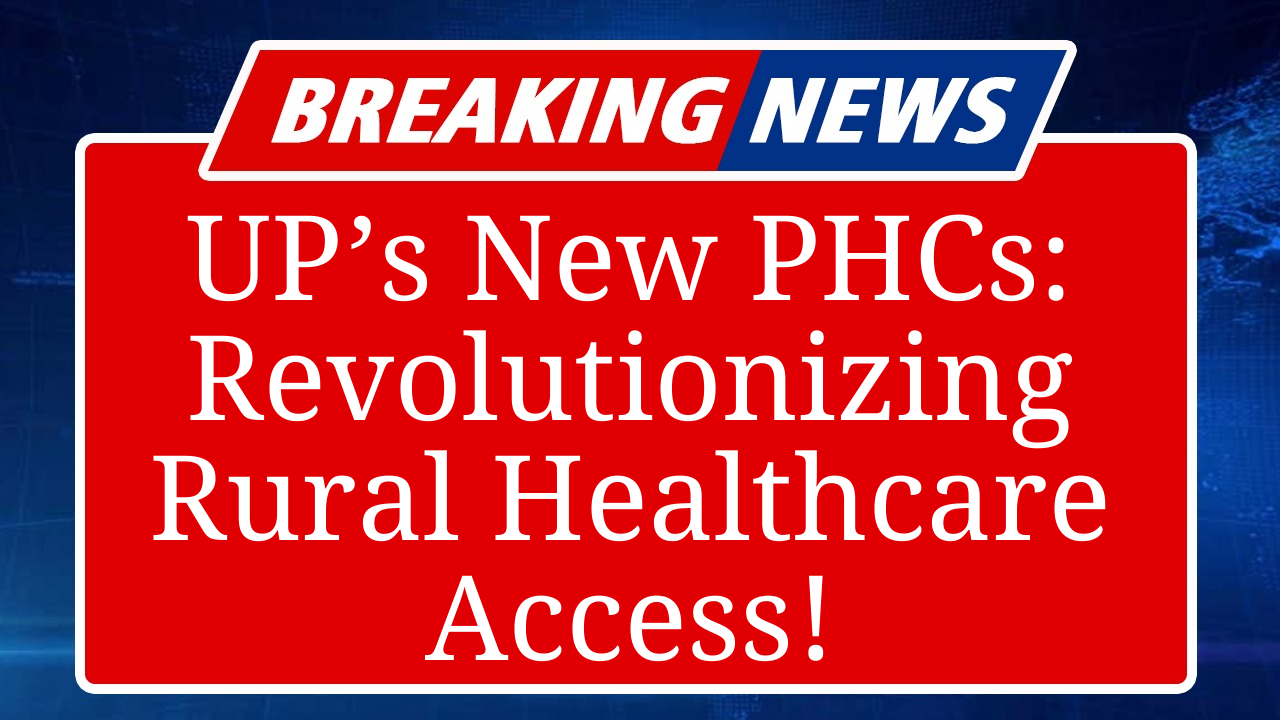“Uttar Pradesh is enhancing rural healthcare by establishing new Primary Health Centers (PHCs) under the National Health Mission. These facilities aim to bridge healthcare gaps, offering 24×7 services, free diagnostics, and maternal care. Despite progress, challenges like doctor shortages and infrastructure deficits persist, requiring sustained efforts to ensure equitable access.”
Uttar Pradesh Expands Rural Healthcare Infrastructure
Uttar Pradesh, home to over 200 million people, has taken significant steps to strengthen its rural healthcare system through the establishment of new Primary Health Centers (PHCs) under the National Health Mission (NHM). As of March 2024, the state has operationalized 12,348 PHCs with 24×7 services and 3,133 First Referral Units (FRUs) to provide timely medical interventions in rural and underserved areas. These centers aim to cater to populations of 20,000–30,000 in rural regions, offering essential services like maternal and child healthcare, free diagnostics, and emergency care.
The initiative aligns with the Ayushman Bharat program, which seeks to transform PHCs into Health and Wellness Centers (HWCs). Over 1.77 lakh Ayushman Arogya Mandirs have been established nationwide, with Uttar Pradesh contributing significantly to this network. These centers provide early disease detection, non-communicable disease management, and telemedicine services through platforms like e-Sanjeevani, which has served over 36 crore patients since 2020. In UP, the focus is on reducing the urban-rural healthcare divide, where rural residents often travel long distances for medical care.
However, challenges remain. Uttar Pradesh faces a 36% vacancy rate for doctors in PHCs, one of the highest in India, exacerbating the doctor-patient ratio of 1:1456, well below the WHO’s recommended 1:1000. The shortage of specialists is even more acute, with 79.5% of specialist posts at Community Health Centers (CHCs) vacant. Only 45.1% of PHCs in the state operate on a 24×7 basis, limiting access to emergency care. Infrastructure gaps, such as inadequate facilities and poor transportation, further hinder timely medical access.
To address these issues, the state is leveraging Public-Private Partnerships (PPPs) and digital health solutions. For instance, Abbott, in collaboration with Americares India Foundation, is converting 75 PHCs into HWCs across nine states, including UP, benefiting over 2.5 million people annually. The Ayushman Bharat Digital Mission (ABDM) has created 73 crore Health Accounts (ABHA), enabling seamless health record management. Additionally, the U-WIN platform, launched in September 2024, digitizes vaccination records to improve public health data management in rural areas.
Community Health Workers, particularly Accredited Social Health Activists (ASHAs), play a pivotal role in UP’s rural healthcare system. ASHAs facilitate immunization drives, maternal care, and health awareness, contributing to improved health outcomes. The state has also increased its healthcare workforce, with allopathic doctors at PHCs rising from 20,308 in 2005 to 30,640 in 2022, a 50.9% increase. However, the shortage of surgeons, obstetricians, and pediatricians remains a critical bottleneck.
Despite these advancements, socio-economic barriers like poverty and low health awareness continue to impede progress. Only 50% of rural households in UP have government health insurance, and 34% lack any coverage, leading to high out-of-pocket expenses that push millions into poverty annually. Cultural beliefs and reliance on traditional healers often delay modern medical interventions, worsening health outcomes.
The state government is exploring incentives like higher salaries and career advancement opportunities to attract healthcare professionals to rural postings. Expanding medical education with a rural focus, such as family medicine programs, is also under consideration to address the workforce shortage over time.
Uttar Pradesh’s efforts reflect a broader national push to achieve universal healthcare by 2025. With continued investment in infrastructure, workforce, and digital health, the state aims to ensure equitable access to quality healthcare for its rural population, reducing disparities and improving overall health outcomes.
Disclaimer: This article is based on recent reports, government data, and credible sources like the National Health Mission, Drishti IAS, and Times of India. Information is accurate as of September 2025, but healthcare statistics and policies may evolve.

